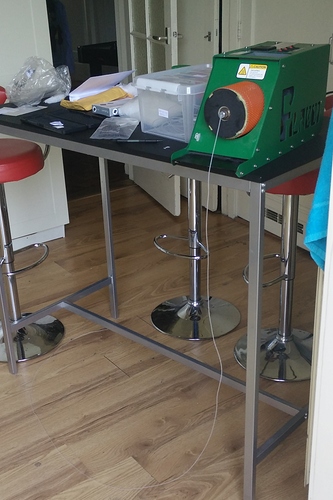Previously I worked on:
3D Recycling #1 2: Extruding ABS and PLA with Filabot
3D Recycling #2 1: Why is my extruded filament so thin?
3D Recycling #3 2: Reprinting your plastic bag: will it work?!
This week:
- PLA filament production
- PP filament production
So this week some more experimenting. Unfortunately we had a minor incident with our Leapfrog so I wasn’t able to do any printing for my tests. However some extra focus on making awesome homemade filament with our very own Filabot definitely paid off.
First off PLA:
I used Colorfabb’s PLA pellets and this went quite well. Last time I didn’t manage to get the diameter of the extruded filament the correct size. This time I did however get very acceptable results for extruding at 140 Celsius.
Then the PP:
Last week I was only able to print a small part of the PP filament because most of it was too thick. So this week I set out to improve the diameter accuracy and consistency of the filament. Although I haven’t been able to test it on our printers yet, I am quite confident to say that with an average diameter of 1,79 mm and 2,92 mm I did quite well.
All of the results so far are listed in the table shown below.
And finally how did I get these results:
- Using a Filabot original
- Let filament drop to the ground from 1,20m
- In a ventilated room
A point that needs to be made is that in this setup by letting the filament drop the filament stretches based on the amount of pull from the already extruded filament. This influences the diameter variance so one thing we will be looking at soon is how to minimize this effect.
For now wI’m happy with these results however and I look forward to using these for some awesome prints!
created
Jun '15last reply
Jun '15- 1
reply
- 1.7k
views
- 2
users
- 7
likes
- 3
links

